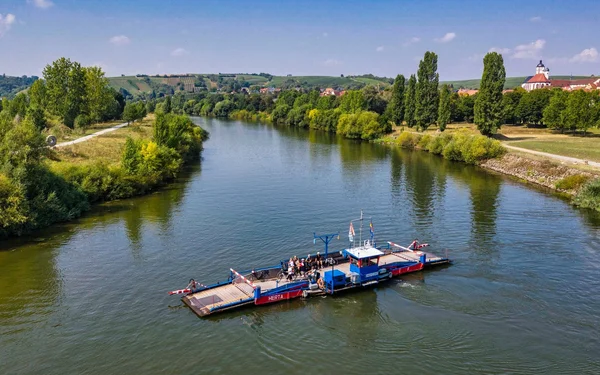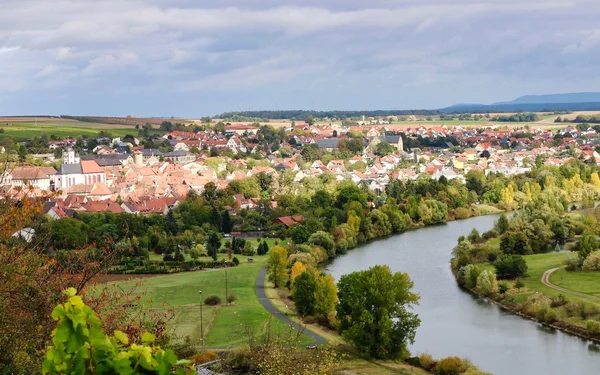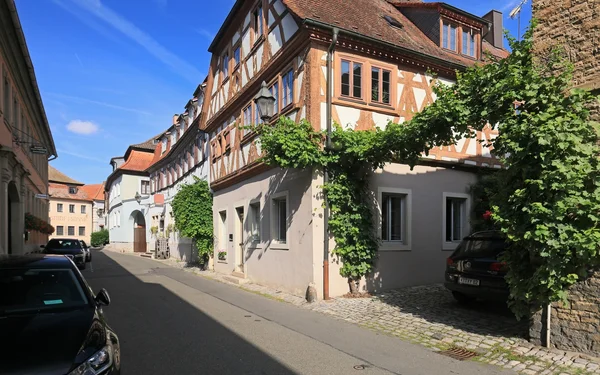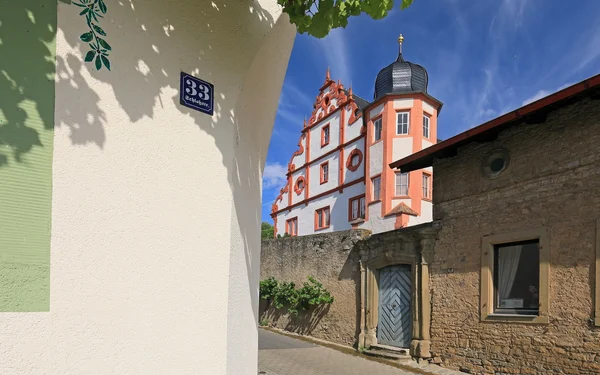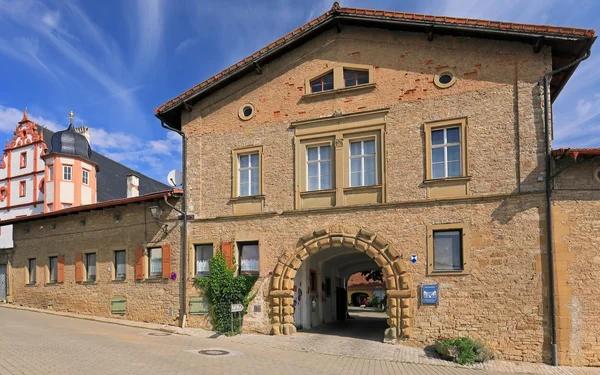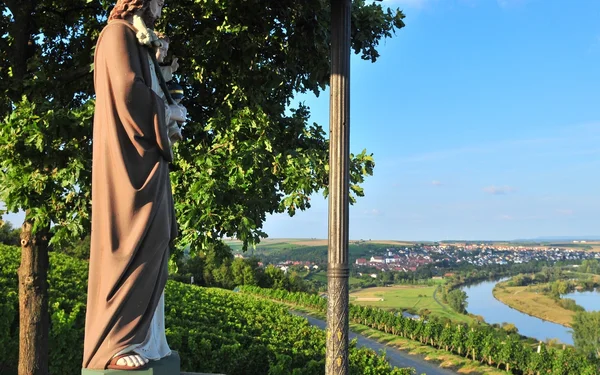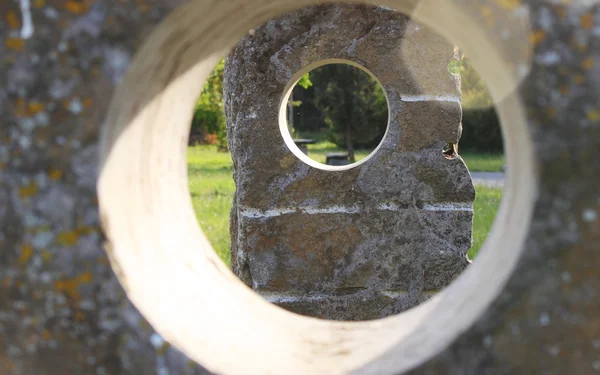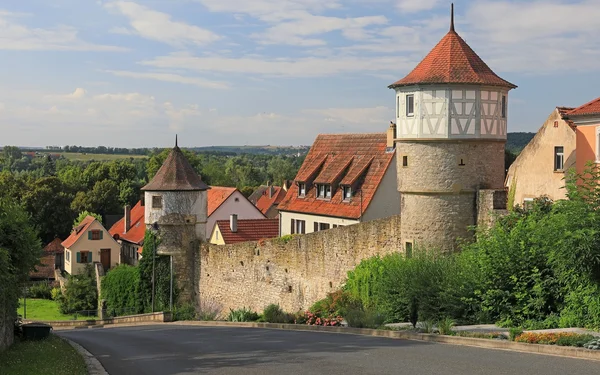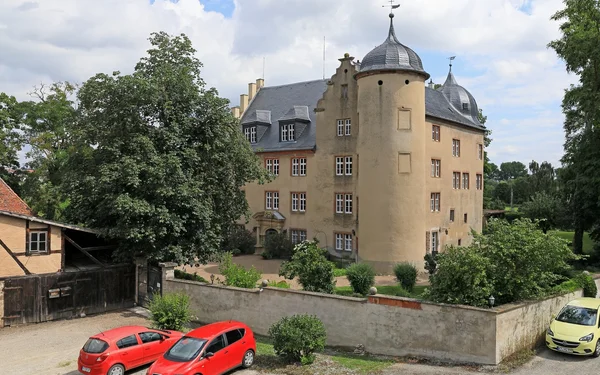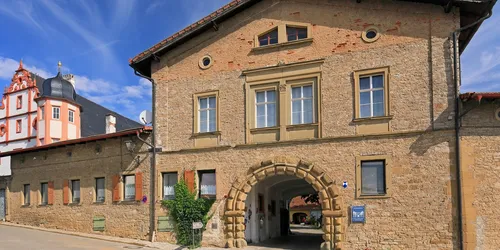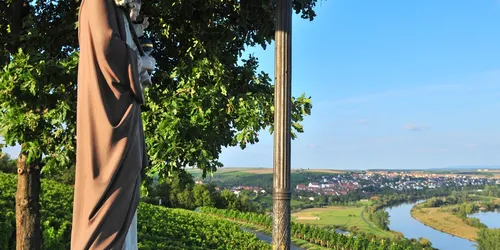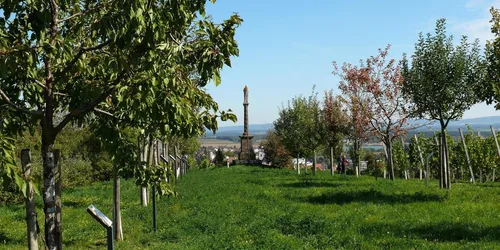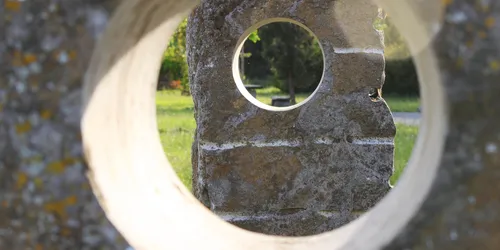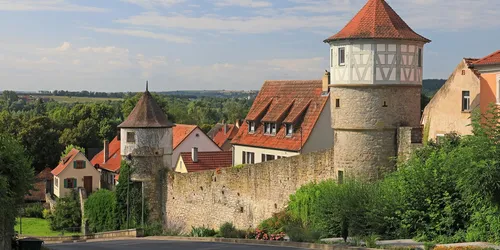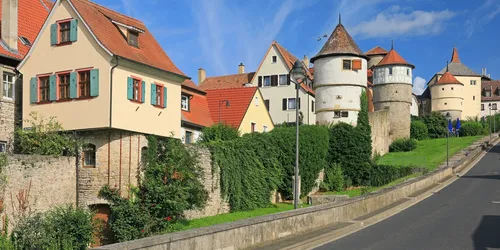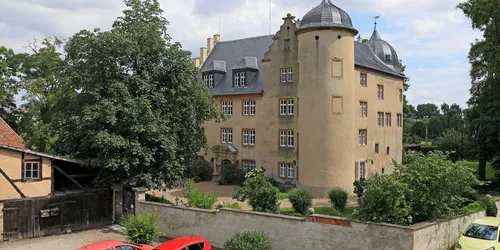The Mainschleife near Dettelbach
A hike with cultural enjoyment - a sculpture park and colourful half-timbered houses await you on this easy tour between vineyards in the valley of the Main. Perfect for nature and culture lovers!
Buchbrunn
5 h
14 km
The beautiful landscape alone would be enough: vineyards to the right and left, with the River Main with its tree-lined banks and meadows in between. But this section of the Main valley has much more to offer.
The small town of Dettelbach, filled with colourful half-timbered houses and surrounded by a medieval wall, is always worth a visit. The castles in the two neighbouring villages of Mainstockheim and Mainsondheim are also well worth a visit - one is a real castle, by the way, the other is a castle in name only.
And did you know that there is so much art to see here? Open-air works of art in the sculpture park and on the sculpture trail along the Main provide a special cultural treat on this rather easy hike in the valley of the Main.
A hiking tour for families, nature lovers and culture vultures
Start and end station
Start station
Buchbrunn-Mainstockheim
5 tour steps
14 km / 5 Stunden
End station
Buchbrunn-Mainstockheim
Our tip: Please make sure to check your train connection and the expected capacity before you start your journey.
Schedule
Tour starts on Buchbrunn-Mainstockheim
Direction
From the railway station, you are drawn directly down the railway path to the banks of the Main, which you will only leave for short detours today. You walk past the sports field and under trees, while the water of one of Germany's most beautiful rivers flows by on your right.
Behind the allotments and a field, you turn away from the river for a detour up Schlossstraße to your first intermediate destination: the Ebracher Hof.
Schlossstraße 32-38
97320
Mainstockheim
Direction
Direction
Mainstockheimer Straße 4-6
97337
Dettelbach
Direction
Am Stadtgraben 6
97337
Dettelbach
Direction
Schlossweg 3
97337
Dettelbach
